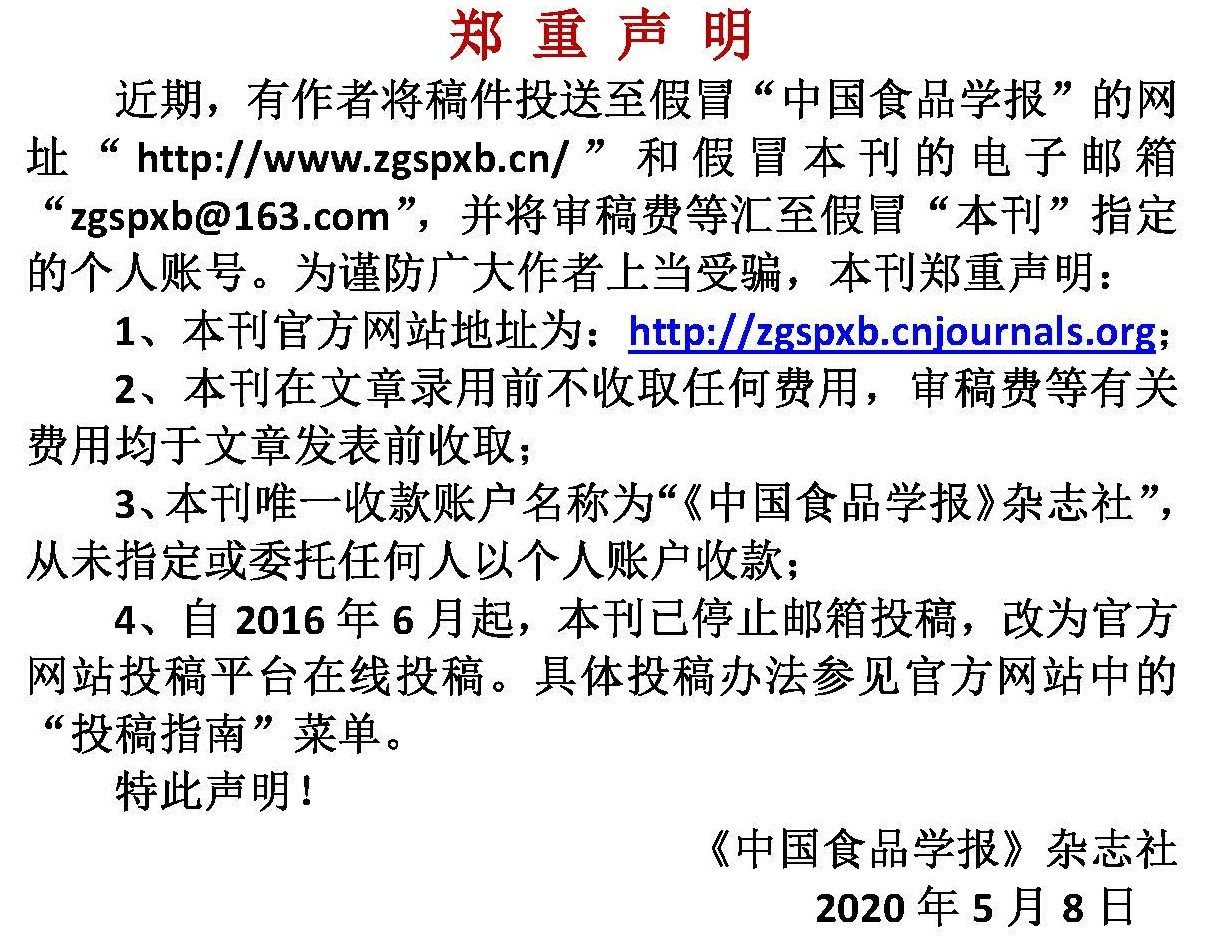沙门氏菌噬菌体SM-p2内溶酶及穿孔素的生物信息学分析和克隆表达
作者:
作者单位:
(西南大学食品科学学院 重庆 400715)
作者简介:
戚斌(1997—),男,硕士生
通讯作者:
中图分类号:
基金项目:
国家自然科学基金面上项目(32072322)
Bioinformatics Analysis and Cloning Expression of Endolysin and Holin in Salmonella Phage SM-p2
Author:
Affiliation:
(College of Food Science, Southwest University, Chongqing 400715)
Fund Project:
引用本文
戚斌,解天慧,石慧.沙门氏菌噬菌体SM-p2内溶酶及穿孔素的生物信息学分析和克隆表达[J].中国食品学报,2022,22(8):32-39
复制分享
文章指标
- 点击次数:
- 下载次数:
- HTML阅读次数:
历史
- 收稿日期:2021-08-02
- 最后修改日期:
- 录用日期:
- 在线发布日期: 2022-09-08
- 出版日期:
文章二维码

版权所有 :《中国食品学报》杂志社 京ICP备09084417号-4
地址 :北京市海淀区阜成路北三街8号9层 邮政编码 :100048
电话 :010-65223596 65265375 电子邮箱 :chinaspxb@vip.163.com
技术支持:北京勤云科技发展有限公司
地址 :北京市海淀区阜成路北三街8号9层 邮政编码 :100048
电话 :010-65223596 65265375 电子邮箱 :chinaspxb@vip.163.com
技术支持:北京勤云科技发展有限公司
